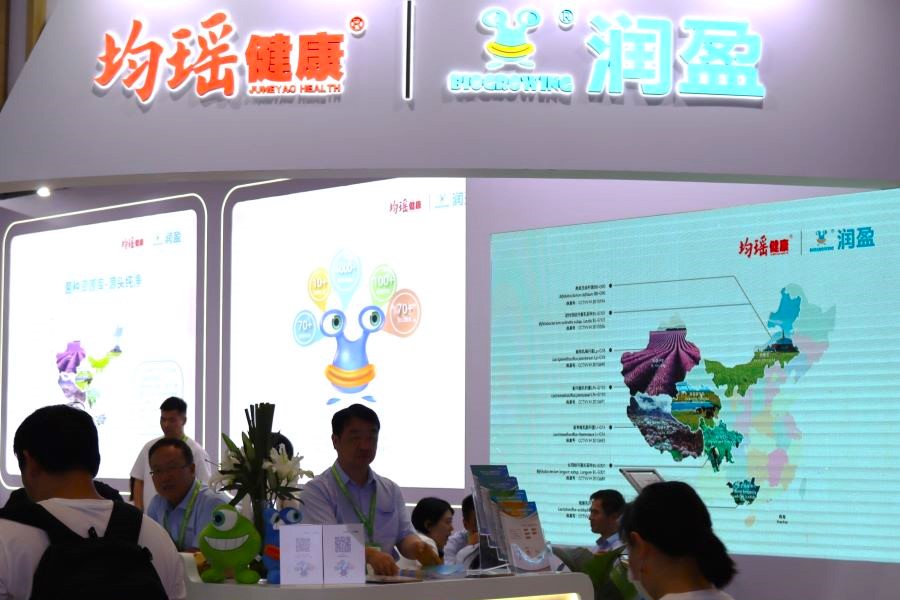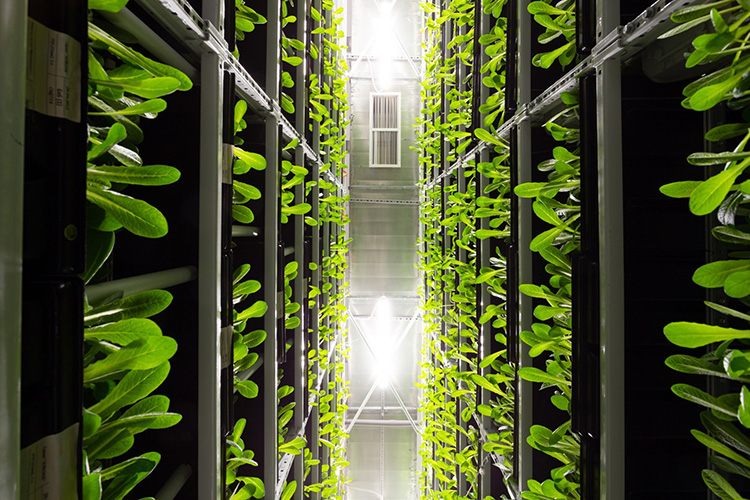Report on Romania’s Agricultural Policy Shift Towards Sustainable Integrated Farming
Executive Summary
On August 5, 2025, Romania’s Minister of Agriculture and Rural Development, Florin Barbu, announced a significant strategic shift for the nation’s agricultural sector. The forthcoming Common Agricultural Policy (CAP) for the 2028-2034 period will mandate the integration of crop cultivation with animal husbandry. This policy change is designed to align Romanian agriculture with key European Union objectives and the United Nations Sustainable Development Goals (SDGs), particularly those concerning food security, sustainable production, and economic resilience.
Future Agricultural Policy Directive (2028-2034)
During a meeting with farmers and public authorities in Zalău, Minister Barbu outlined the core components of the future agricultural strategy. The primary objective is to foster a more sustainable and circular agricultural model.
- Financial Allocation: Over four billion euros from the 2028-2034 CAP will be specifically earmarked to support the transition to integrated crop-livestock systems.
- Subsidy Conditionality: Access to key subsidies, including coupled support and certain eco-schemes, will be contingent upon farmers adopting integrated practices. This marks a departure from previous subsidy models.
- National Priority: The policy aims to prioritize domestic raw material production to supply Romania’s developing food processing industry, thereby strengthening the national value chain and reducing reliance on international corporations.
Alignment with Sustainable Development Goals (SDGs)
The proposed policy framework demonstrates a strong commitment to advancing several SDGs:
- SDG 2: Zero Hunger: By promoting integrated farming, the policy directly supports Target 2.4, which calls for ensuring sustainable food production systems and implementing resilient agricultural practices. These systems enhance productivity and help maintain ecosystems, strengthening food security.
- SDG 12: Responsible Consumption and Production: The integration of crops and livestock is a cornerstone of circular agriculture. This model promotes the sustainable management and efficient use of natural resources (Target 12.2) by creating closed-loop systems where animal manure fertilizes crops, reducing chemical fertilizer dependency and minimizing waste.
- SDG 8: Decent Work and Economic Growth: The focus on developing domestic processing capabilities and supporting local farmers contributes to sustained, inclusive, and sustainable economic growth in rural areas. It aims to create higher-value economic activities within Romania.
- SDG 9: Industry, Innovation, and Infrastructure: The strategy includes an ambitious program for developing national processing infrastructure, aligning with Target 9.2 to promote inclusive and sustainable industrialization by building a resilient domestic agri-food industry.
- SDG 13 & SDG 15 (Climate Action & Life on Land): Integrated agricultural systems contribute to climate mitigation by improving soil health and carbon sequestration. They also protect terrestrial ecosystems (SDG 15) by enhancing biodiversity and reducing the environmental impact of farming.
Implementation and Strategic Context
The announcement was made at an event organized by the National Rural Network, which aimed to improve the absorption of European funds dedicated to agriculture and rural development. The Minister’s forward-looking guidance is intended to provide farmers with the necessary lead time to adapt their operations to meet the new sustainability criteria. The overarching goal is to create a robust, self-sufficient agricultural sector that is environmentally sustainable, economically viable, and fully aligned with global development targets.
SDGs, Targets, and Indicators Analysis
1. Which SDGs are addressed or connected to the issues highlighted in the article?
- SDG 2: Zero Hunger – The article’s core focus is on agriculture, food production, farmer subsidies, and sustainable farming practices.
- SDG 8: Decent Work and Economic Growth – The article discusses developing local processing industries and ensuring subsidies benefit the national economy.
- SDG 12: Responsible Consumption and Production – The promotion of integrated crop-livestock systems and local raw material sourcing points to sustainable production patterns.
- SDG 17: Partnerships for the Goals – The article highlights the alignment of national agricultural policy with the broader European Union’s Common Agricultural Policy.
2. What specific targets under those SDGs can be identified based on the article’s content?
-
SDG 2: Zero Hunger
- Target 2.3: “By 2030, double the agricultural productivity and incomes of small-scale food producers…” The article directly addresses this by discussing a new subsidy structure (€4 billion) aimed at supporting farmers and making them more competitive and prepared for future funding opportunities.
- Target 2.4: “By 2030, ensure sustainable food production systems and implement resilient agricultural practices…” The minister’s recommendation to integrate crop cultivation with animal husbandry is a direct call for implementing sustainable agricultural practices. This is reinforced by the mention that future “eco-schemes” will be conditional on this integration.
-
SDG 8: Decent Work and Economic Growth
- Target 8.2: “Achieve higher levels of economic productivity through diversification, technological upgrading and innovation…” The article mentions an “ambitious program underway for the development of processing in Romania,” which is a strategy to increase economic productivity through value addition in the agricultural sector.
-
SDG 12: Responsible Consumption and Production
- Target 12.2: “By 2030, achieve the sustainable management and efficient use of natural resources.” The integration of crops and livestock is a model for efficient resource use, where animal waste can fertilize crops and crop residues can feed animals, creating a circular system within the farm.
-
SDG 17: Partnerships for the Goals
- Target 17.14: “Enhance policy coherence for sustainable development.” The Romanian Minister of Agriculture is aligning national policy with the future Common Agricultural Policy of the European Union (2028-2034). This proactive alignment ensures that national strategies are coherent with regional sustainable development goals.
3. Are there any indicators mentioned or implied in the article that can be used to measure progress towards the identified targets?
-
SDG 2: Zero Hunger
- Implied Indicator for Target 2.3: The total value of government subsidies and financial support provided to farmers. The article explicitly mentions “over four billion euros” will be directed towards this new integrated farming policy, which serves as a direct financial indicator.
- Implied Indicator for Target 2.4: The proportion of agricultural area under productive and sustainable agriculture. Progress can be measured by tracking the number of farms or the total agricultural area that adopts the integrated crop-livestock model to qualify for subsidies and eco-schemes.
-
SDG 8: Decent Work and Economic Growth
- Implied Indicator for Target 8.2: The growth of value-added industries. The success of the “ambitious program for the development of processing in Romania” can be measured by the increase in domestic processing capacity and the volume of local raw materials used.
-
SDG 12: Responsible Consumption and Production
- Implied Indicator for Target 12.2: Domestic material consumption. An increase in the use of local raw materials for the new processing facilities, as mentioned in the article, would be a key measure of progress towards more localized and sustainable production chains.
-
SDG 17: Partnerships for the Goals
- Implied Indicator for Target 17.14: The existence of national policies aligned with international/regional frameworks. The minister’s announcement itself is an indicator of a mechanism to enhance policy coherence, as Romania is adapting its agricultural strategy to align with the future EU Common Agricultural Policy.
4. Summary Table of Findings
| SDGs | Targets | Indicators (Mentioned or Implied) |
|---|---|---|
| SDG 2: Zero Hunger | Target 2.3: Double agricultural productivity and incomes of small-scale food producers. | The allocation of “over four billion euros” in subsidies to support farmers. |
| Target 2.4: Ensure sustainable food production systems and resilient agricultural practices. | The number/percentage of farms adopting integrated crop-livestock systems to qualify for “eco-schemes.” | |
| SDG 8: Decent Work and Economic Growth | Target 8.2: Achieve higher levels of economic productivity through diversification and value-addition. | Growth in domestic food processing capacity and the use of local raw materials. |
| SDG 12: Responsible Consumption and Production | Target 12.2: Achieve the sustainable management and efficient use of natural resources. | The rate of adoption of integrated farming, which promotes efficient on-farm resource cycling. |
| SDG 17: Partnerships for the Goals | Target 17.14: Enhance policy coherence for sustainable development. | The implementation of a national agricultural policy that is explicitly aligned with the future EU Common Agricultural Policy. |
Source: europeannewsroom.com







